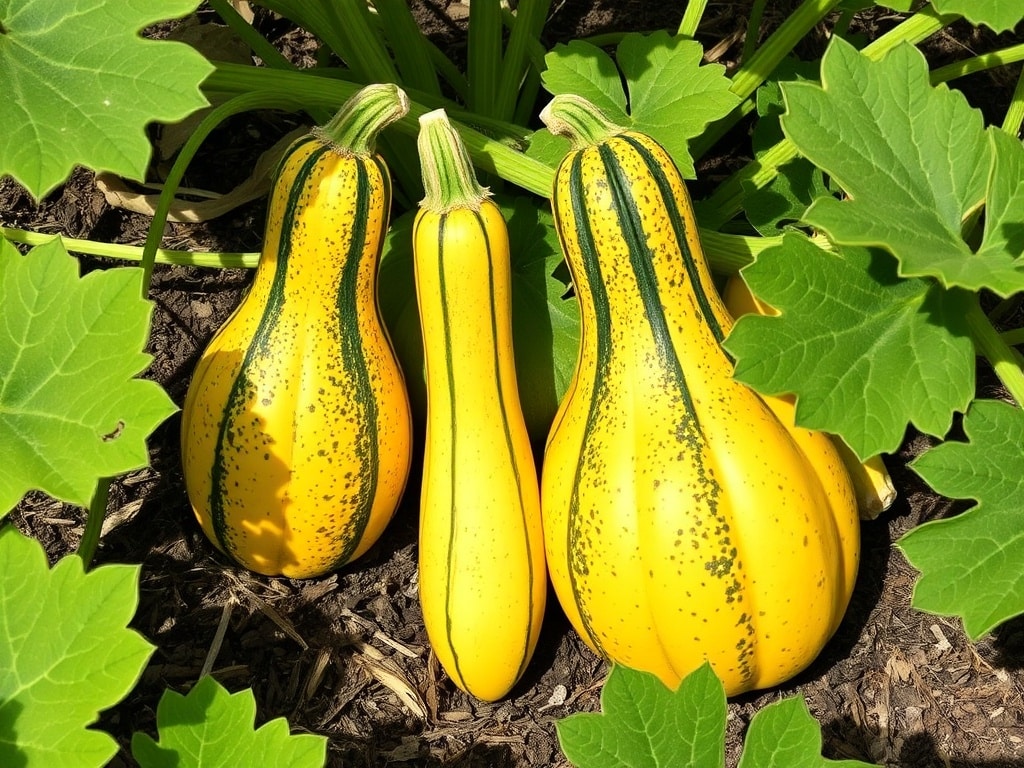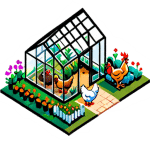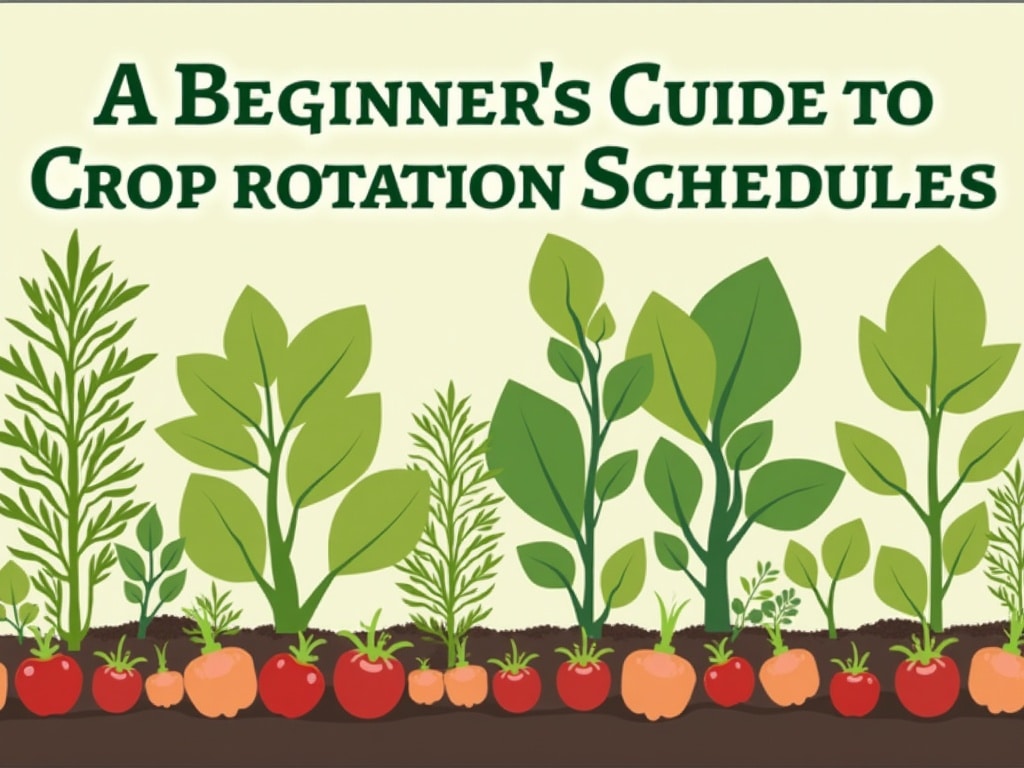From Seed to Supper: A Beginner's Guide to Crop Rotation Schedules
Imagine a garden bursting with vibrant, healthy vegetables, thriving year after year without the need for excessive fertilizers or pesticides. This isn't just a gardener's dream; it's a tangible reality achieved through the practice of crop rotation. But what exactly is crop rotation, and how can you, as a beginner, implement a successful crop rotation schedule for your vegetable garden?
This comprehensive guide will take you from understanding the fundamental principles to creating a practical crop rotation plan tailored to your garden's specific needs. Get ready to unlock the secrets to healthier soil, fewer pests, and bountiful harvests.
What is Crop Rotation and Why is it Essential?
At its core, crop rotation is the systematic practice of changing the types of crops planted in a specific area of your garden each growing season. Instead of planting the same vegetables in the same spot year after year, you strategically rotate different plant families. This seemingly simple act has profound effects on soil health and overall garden productivity.
So why is it so important? Monoculture, or repeatedly planting the same crop, depletes specific nutrients from the soil, encourages the buildup of pests and diseases that target that particular plant, and weakens the soil structure over time. Crop rotation, on the other hand, breaks these negative cycles and fosters a more balanced and resilient ecosystem in your garden.
Unlocking the Benefits: Soil Health, Pest Control, and Increased Yields
The benefits of implementing a carefully planned crop rotation schedule for your vegetable garden are numerous and impactful:
- Improved Soil Health: Different plant families have different nutrient needs. Rotating crops prevents the depletion of specific nutrients and allows the soil to naturally replenish.
- Natural Pest and Disease Control: Rotating crops disrupts the life cycles of pests and diseases that thrive on specific plants. By moving their favorite food source, you naturally reduce their populations and prevent outbreaks.
- Increased Yields: Healthier soil and reduced pest pressure translate to stronger, more productive plants, ultimately leading to higher yields.
- Reduced Need for Chemical Inputs: With healthier soil and fewer pest problems, you'll significantly reduce the need for synthetic fertilizers and pesticides, creating a more sustainable and environmentally friendly garden.
- Enhanced Soil Structure: Different root systems improve soil structure, leading to better drainage and aeration.
Consider this resource for additional information: Your Ultimate Crop Rotation Guide: Maximize Yields and Soil Health.
Basic Principles: Plant Families and Their Needs
Understanding plant families is crucial to developing an effective crop rotation schedule for vegetable garden. Plants within the same family often share similar nutrient needs, pest susceptibilities, and disease vulnerabilities. Here's a look at some key families:
- Legumes (Fabaceae): Beans, peas, lentils, and cover crops like clover and alfalfa.
- Brassicas (Brassicaceae): Cabbage, broccoli, cauliflower, kale, Brussels sprouts, radishes, and turnips.
- Solanaceae (Solanaceae): Tomatoes, peppers, eggplants, and potatoes.
- Alliums (Alliaceae): Onions, garlic, leeks, shallots, and chives.
- Cucurbits (Cucurbitaceae): Squash, pumpkins, cucumbers, melons, and gourds.
- Apiaceae (Umbelliferae): Carrots, parsnips, celery, parsley, and dill.
- Asteraceae (Compositae): Lettuce, sunflowers, artichokes, and chamomile.
- Chenopodiaceae: Spinach, beets, chard, and quinoa.
Knowing which vegetables belong to which families allows you to rotate crops with different needs and vulnerabilities. For instance, following a heavy-feeding brassica with a nitrogen-fixing legume is a classic example of effective crop rotation.
Legumes: The Nitrogen Fixers
Legumes are the stars of crop rotation due to their unique ability to fix nitrogen from the atmosphere and convert it into a form that plants can use. This natural nitrogen boost enriches the soil and benefits subsequent crops. Include legumes in your rotation to naturally fertilize your garden. Consider planting beans, peas, or even cover crops such as clover or alfalfa. After the legume crop is finished, till the plant matter into the soil to release the stored nitrogen.
Brassicas: The Heavy Feeders
Brassicas, such as broccoli, cabbage, and kale, are known as heavy feeders because they require significant amounts of nutrients from the soil. Planting brassicas in the same location year after year can quickly deplete essential minerals. It's best to follow brassicas with legumes to replenish the nitrogen they consume or with a light-feeding crop that won't further deplete the soil.
Solanaceae: Watch Out for Soil-Borne Diseases
The Solanaceae family, which includes tomatoes, peppers, and eggplants, is particularly susceptible to soil-borne diseases, such as Verticillium wilt and Fusarium wilt. These diseases can persist in the soil for years, making it crucial to rotate Solanaceae crops to prevent buildup. Avoid planting Solanaceae crops in the same location for at least three to four years. Breaking the cycle with a different plant family will help minimize disease pressure and ensure healthier plants.
Alliums: Natural Pest Repellents
Alliums, such as onions, garlic, and leeks, have natural pest-repelling properties. Their strong scent can deter various insects and even some soil-borne nematodes. Incorporating alliums into your crop rotation schedule for vegetable garden can help to naturally suppress pest populations and protect your other crops. Plant alliums strategically to create a less hospitable environment for pests throughout your garden.
Other Plant Families to Consider
While legumes, brassicas, solanaceae and alliums are critical, don't forget about other important plant families:

- Cucurbits: Squash, pumpkins, and cucumbers need a lot of space and benefit from nutrient-rich soil.
- Apiaceae: Carrots and celery have deep roots that can improve soil structure.
- Asteraceae: Lettuce and sunflowers are relatively light feeders.
- Chenopodiaceae: Spinach and beets tolerate a range of soil conditions.
Designing a Crop Rotation Schedule for a Small Garden
If you have a small garden, a simple 3- or 4-year crop rotation schedule for vegetable garden can be very effective. Here's a basic example:
- Year 1: Legumes (beans, peas)
- Year 2: Brassicas (cabbage, broccoli)
- Year 3: Solanaceae (tomatoes, peppers)
- Year 4: Alliums (onions, garlic) or Cucurbits (squash, cucumbers)
In this plan, you're alternating heavy feeders with nitrogen fixers and pest-repelling plants. You can simplify this further by combining the Alliums and Cucurbits into a general light to medium feeder category.
Creating a Crop Rotation Plan for Larger Gardens
For larger gardens, you have more flexibility and can incorporate cover crops and composting into your crop rotation schedule for vegetable garden. Here's how to approach it:
- Divide Your Garden: Divide your garden into four or more sections, each dedicated to a different plant family.
- Incorporate Cover Crops: Plant cover crops such as oats, rye, or buckwheat in sections that are not actively being used for vegetable production. Cover crops improve soil structure, suppress weeds, and add organic matter to the soil.
- Composting: Regularly add compost to your garden beds to improve soil fertility and structure. Incorporate compost before planting each crop to provide essential nutrients.
Practical Examples of Crop Rotation Schedules
Here are some more detailed examples of crop rotation schedules for vegetable garden:
- Example 1 (3-Year Rotation):
- Year 1: Legumes (beans, peas)
- Year 2: Heavy Feeders (brassicas, cucurbits)
- Year 3: Light Feeders (lettuce, carrots)
- Example 2 (4-Year Rotation):
- Year 1: Legumes (beans, peas, clover cover crop)
- Year 2: Brassicas (cabbage, kale, broccoli)
- Year 3: Solanaceae (tomatoes, peppers, eggplant)
- Year 4: Alliums (onions, garlic)
The Importance of Record Keeping
Keeping accurate records is essential for tracking your crop rotation schedule for vegetable garden and assessing its effectiveness. Create a garden journal or use a spreadsheet to document which crops you planted in each location each year. Note any observations about plant health, pest problems, yields, and soil conditions. This information will help you refine your rotation plan over time and make informed decisions about future plantings.
Common Mistakes to Avoid
Avoid these common mistakes when implementing crop rotation:
- Not Knowing Plant Families: Misidentifying plant families can disrupt the effectiveness of your rotation plan.
- Inconsistent Rotation: Sticking to your rotation schedule is crucial; inconsistent rotation can negate its benefits.
- Ignoring Soil Health: Crop rotation alone isn't a complete solution. Supplement your rotation with composting and other soil-building practices.
- Forgetting to Keep Records: Without records, you won't be able to track your progress or make informed adjustments.
Companion Planting and Crop Rotation: A Powerful Combination
Combining companion planting with crop rotation can further enhance the health and productivity of your garden. Companion planting involves growing specific plants together that benefit each other, such as basil and tomatoes, or carrots and onions. By strategically incorporating companion plants into your crop rotation schedule for vegetable garden, you can maximize pest control, improve pollination, and enhance nutrient uptake.
Resources for Further Learning
To deepen your knowledge of crop rotation and soil health, explore these resources:
- University Extension Services: Contact your local university extension service for regional-specific advice and resources.
- Books: Teaming with Microbes: The Organic Gardener's Guide to the Soil Food Web by Jeff Lowenfels and Wayne Lewis.
- Online Forums: Join online gardening forums and communities to connect with experienced gardeners and share tips and insights.
From Novice to Expert
Implementing a crop rotation schedule for vegetable garden is a journey, not a destination. Start with a simple plan, keep detailed records, and be prepared to adjust your approach as you learn and grow. With a little patience and observation, you'll be well on your way to creating a healthy, productive garden that thrives year after year.

